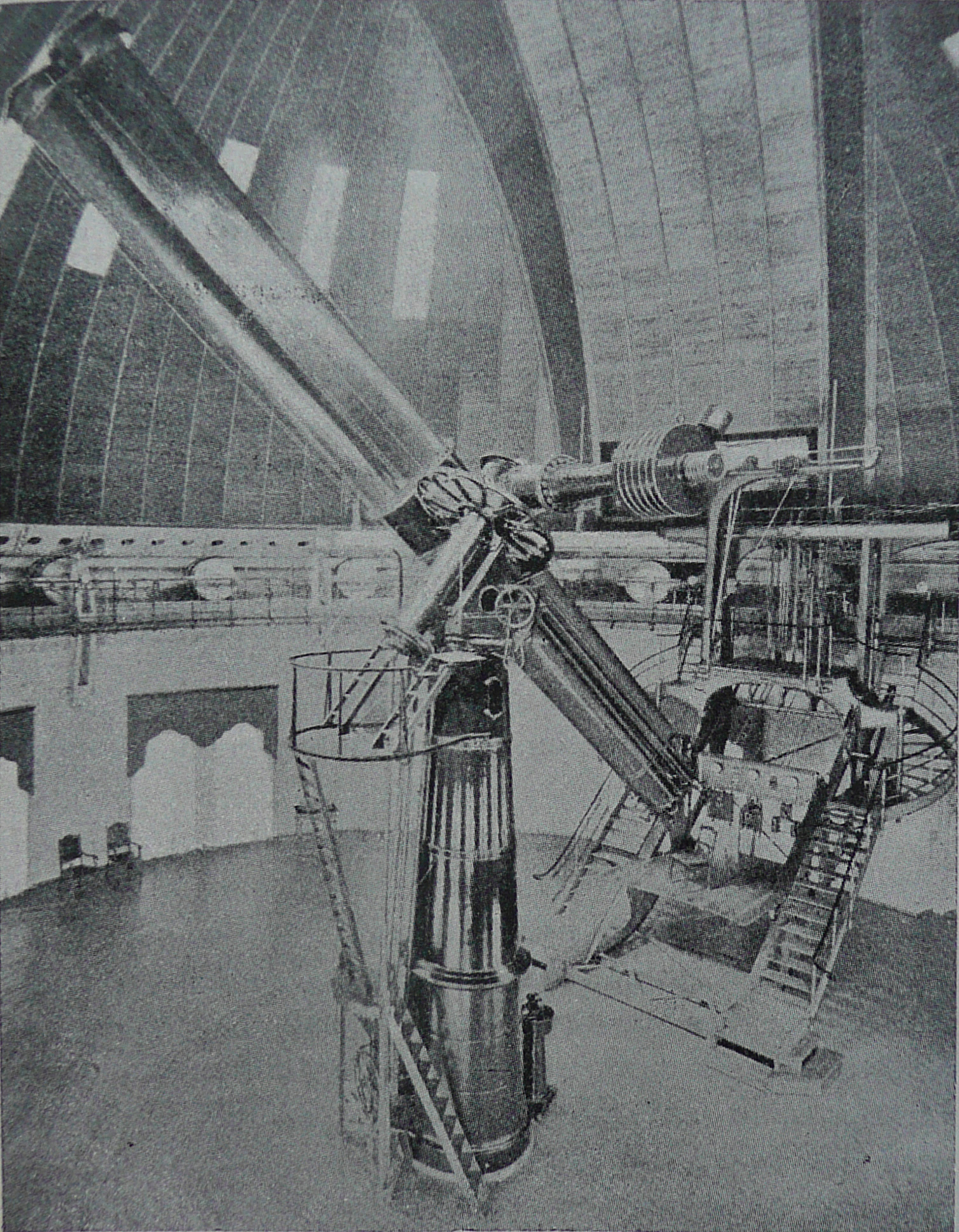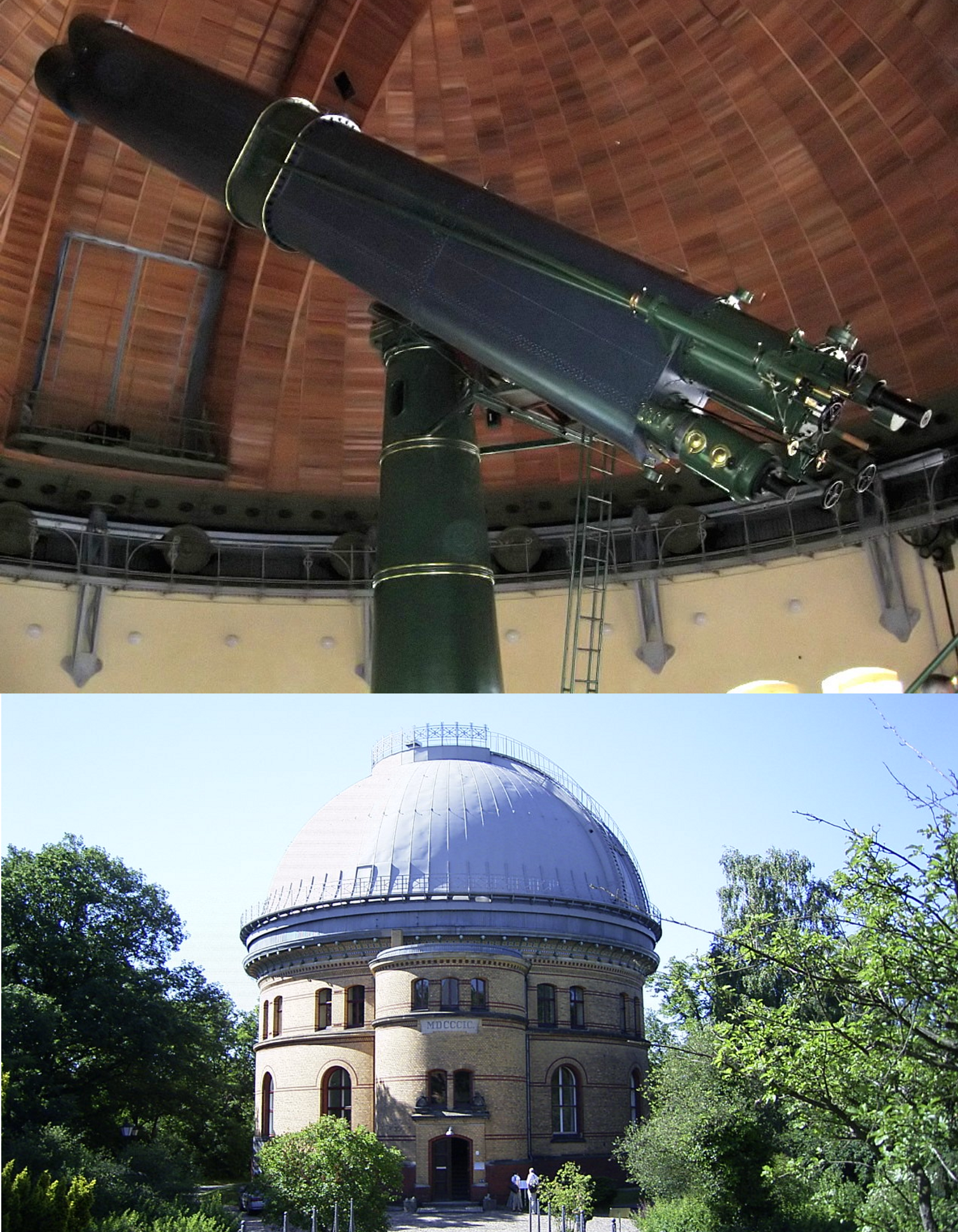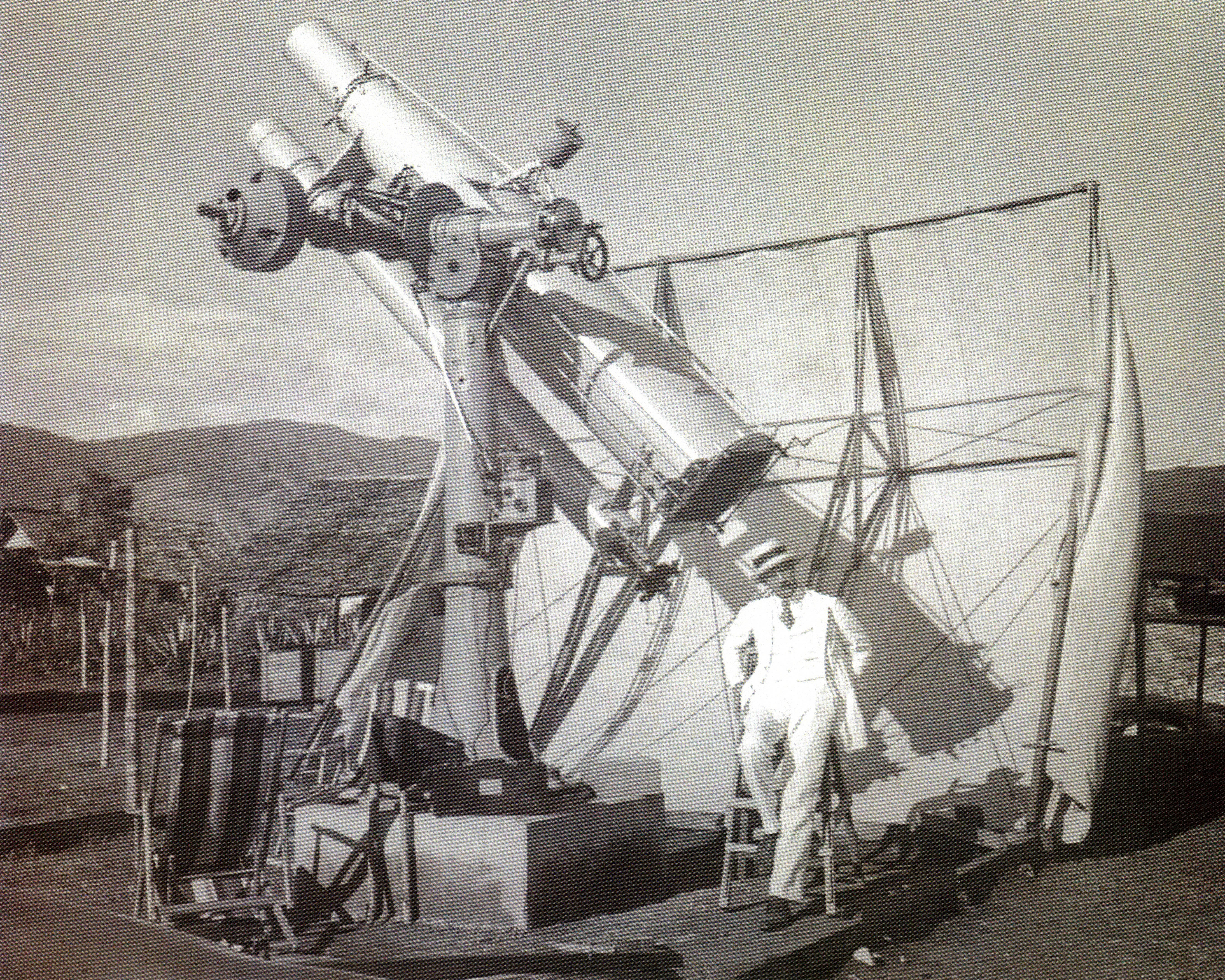Potsdam Telescopes and Instruments
Grosser Refraktor
The first major telescope in use was the worldwide known Great Refractor, installed and inaugurated in the presence of Emperor Wilhelm II in 1899 at the Telegrafenberg in Potsdam and operated till 1968.

|

|
Doppel-Refraktor
The Doppel-Refraktor is a doublet made of two tubes with apertures of 50 and 80 cm. The observations for the CdC project in Potsdam were carried out using this telescope with mechanics built by the firm Repsold in Hamburg and optics were from Steinheil in Munich. The refractor had two objectives, one for photographic observations of 325 mm aperture, another 230 mm one for visual observations, and a focal length of 3.438 m. The telescope was mounted in spring 1889 and some months later the first test plates were taken.
Zeiss-Triplet

A decade after the installation of the Great Refractor another extensively used instrument was installed in 1909 - the Zeiss-Triplet, originally as a single 15-cm refractor, but on August 17th, 1932 extended by three other instruments on the same mounting: a 17-cm refractor, a 40-cm mirror and a 9-cm Tessar camera. At least 5600 plates were obtained with Zeiss-Triplet by 1938. One of the most important contributions from this telescope was its observations of the Kapteyn fields carried out from 1910 till 1926 and yielding over 200 plates.
Great and Small Schmidt Camera
Other two noteworthy instruments at a later period were the Small Schmidt Camera and the Great Schmidt Camera. The former had a 25-cm aperture and was in use from 1949 till 1957, the latter had a 50-cm aperture and operated from 1952 till 1970. In total more than 600 plates were obtained with these two Schmidt telescopes. Among classical objects of observations like stars, minor planets, galaxies and others, with the new-born era of space flight a totally new field of optical observations was worked on with these cameras, namely, observations of artificial satellites.